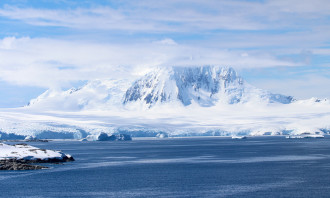
World Agriculture publishes articles on this site as soon as they are accepted for publication. Individual articles are assigned a four digit code identifying the year of publication followed by the sequential number allocated to each paper in each year. This digital code provides a unique identifier for each article and is indexed.
Loading...

British Antarctic Survey, Natural Environment Research Council, High Cross, Madingly Road, Cambridge CB3 0ET, UK
Index introduction
A definitive and comprehensive paper assessing the effects of climate change on the terrestrial and …
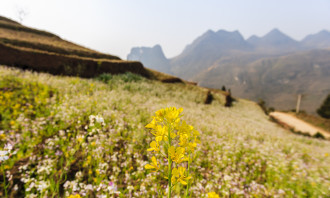
Evaluation of cotton production under limited water resources in the arid region of Xinjiang, China
First author email: zhaoaiqin2002@126.com
*Corresponding author email: weixj06@163.com
(Chinese Academy of Agricultural Engineering, Chinese Society of Agricultural Engineering, Postdoctoral Scientific Research Stations of Chinese Academy …
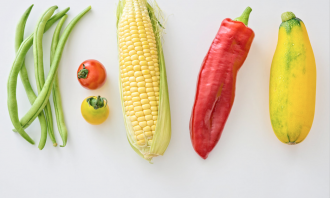
Editing Genetically Modified Organisms: BioEngineered aware
Grow More Foundation 25 Health Sciences Drive, Stony Brook NY 11790 * Corresponding author email kmcreasey@growmorefoundation.org
Advancements in crop genomics and molecular biology are enabling us to combat plant pests, disease, environmenta…
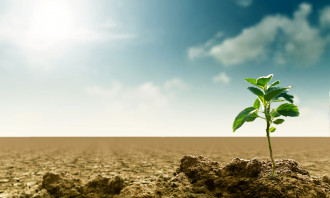
Comments (agricultural, environmental) to the Intergovernmental Panel on Climate Change report of 6th October, 2018
“ Global warming of 1.5°C, an IPCC special report on the impacts of global warming of 1.5°C above pre-industrial levels and related global greenhouse gas emission pathways, in the context of strengthening the global response to the threat of climate …
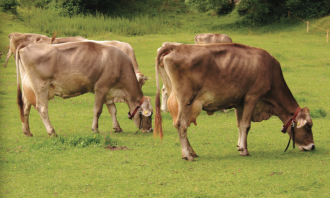
Projected effects of climate change on vector-borne zoonotic diseases of animals
Summary
Environmental temperature change of climate and rainfall distribution and intensity, the migration of wild animals, and movement of domestic animals and the migration of people and increasing tourism are all affecting the distribution …
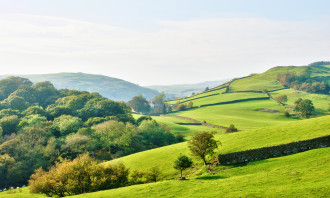
Editor’s Comment – The importance of green plants
BEN Aldiss has drawn attention to what must be an issue that is common in so-called developed countries.
It is likely to be more prevalent in island communities, such as that of the UK, in which the countryside is particularly benign. Our most …
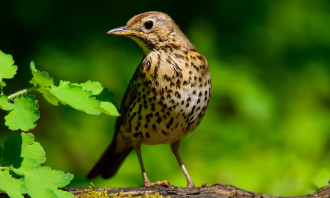
Who will look after our countryside?
AT the beginning of a recent talk on the plight of Britain’s wildlife, I projected a photo of a song thrush and asked if anyone knew what it was.
Of the hundred or so teenagers and young adults in the audience, only one raised his hand.
…
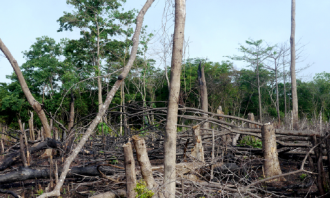
Climate change, crop plant diseases and future food production
Over the next 100 years, with increasing levels of CO 2 and O 3 , global temperatures are predicted to rise by 2°to 4 °C.
Extreme weather events such as drought, heat waves and erratic rainfall patterns are also likely to become more common. …

Editor’s comments on climate change and the vectors of tropical human parasitic diseases
Dr Jillian Lenné (#1810) has provided an introduction to climate change and plant disease.
She noted the paucity of information on food crops in developing countries. This lack of evidence is partly caused by the concentration of research …
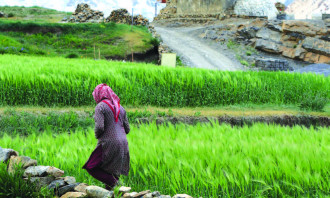
Commentary
In March 2018, an account of a remarkable experiment involving millions of smallholder farmers in China was published in the journal Nature by Cui et al. (Nature 555, 363-66, doi 10.1038/nature25785; 2018).
The aim was to provide bespoke …

Ensuring the safety and reliability of foods and other products in agricultural supply chains. A case study involving vegetable oils.
Summary
The growing complexity of global supply chains means that ensuring the safety and authenticity of food and non-food agricultural products is an ever-increasing challenge. This article focuses on fats, which, together with proteins and …
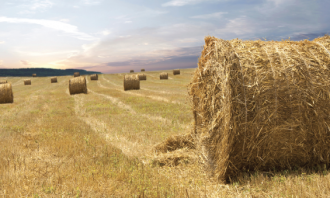
Notes on factors to be considered concerning the financial effect of Brexit on British agricultural production
From Article 50 & Agriculture. March 2017 CARAS Bulletin No.47, pp.2-3
Professor Sir John Marsh, CBE, FRAgS offered the following key practical points to consider post-Brexit:
1. At what price in sterling will imports be available? …
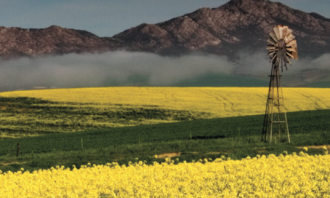
Editor’s comments
The three papers to follow (#1806 to #1808) are by Professor Sir John Marsh, by Kirstie Goggin and Professor Murphy and the third by Prof. Murphy.
The first is short notes on the subject of finance and how Brexit is expected to lower food costs …
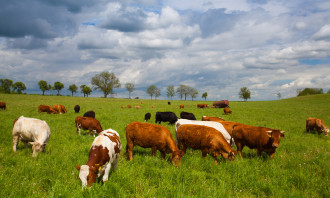
The functions and sizes of the five carbon sinks on planet Earth and their relation to climate change. Part 4. Is the criticism of pastured beef cattle justified, or is there a question over the source of the carbon?
SUMMARY
A carbon sink is a natural or artificial reservoir that accumulates and stores some carbon -containing chemical compound for an indefinite period. The process by which carbon sinks remove carbon dioxide ( CO 2 ) from the atmosphere …
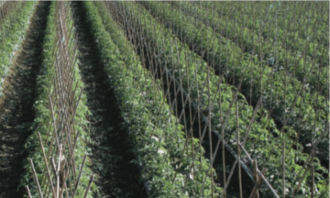
Sustainable intensification
Summary
There is the prospect of a global population of 9 billion by mid 21st Century. Rising real levels of income, growing constraints on food production from climate change and alternative land use together with an accelerating rate of …
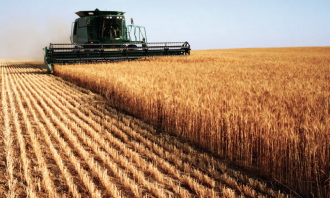
Editor’s Note
3rd January 2018
Dr Tina Barsby, Chief Executive Officer of the National Institute of Agricultural Botany & East Malling Research (NIAB EMR) and a member of our Editorial Board of World Agriculture is awarded the Order of the British Empire (OBE) for Services …

The functions and sizes of the five carbon sinks on planet Earth and their relation to climate change. Part 3, temperate Deciduous Broad-leaved forests- do they have a role in global warming?
Summary
The comparison of deciduous broad-leaved (DB) with coniferous evergreen (CE) forests, in respect of biodiversity and their effect on climate change, is restricted, as many published comparisons are made between these two forest types …

Book review and comment. Robert Cook
4th December 2017
Genetically Modified Organisms in Developing Countries: Risk analysis and Governance. Ed. Ademola A Adente, E Jane Morris and Denis J Murphy. Cambridge University Press, 2017; ISBN 978-1-107-15191-8, Hardback; DOI 10.1017/9781316585269.
…
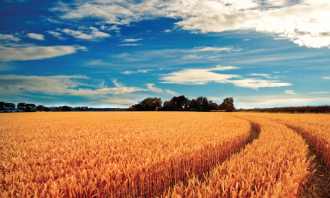
Crop Diversity for Human Nutrition and Health Benefits- I
4th December 2017
A Comment by Professor Sir John Marshᵼ
This paper draws attention to the important role of diversity in terms of human nutrition. The increased availability of a limited number of cereals has resulted in a situation in which a small number of …

Crop Diversity for Human Nutrition and Health Benefits
Crops For the Future (CFF), Jalan Broga, 43500 Semenyih, Selangor Darul Ehsan, Malaysia
Summary
Alongside dramatic increases in crop production over the last 50 years, global food systems have become more dependent on a few major `staple’ …
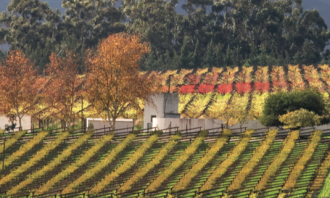
Methods for Increasing Sustainability of Agro-ecosystems Based on the Ecological Footprint in China
(College of Resources and Environmental Sciences, China Agricultural University, Beijing 100193, China)
Abstract: Sustainability of agro-ecosystems plays an important role in regional ecological safety and food security. As an ecological …
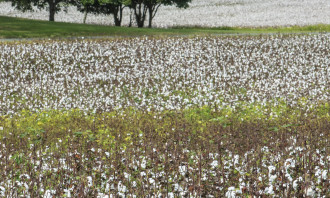
Ecological Footprint (EF) must not exceed its Biocapacity to ensure the sustainability of life!
Comment on Guishen et al. 1
Guishen et al. 1 demonstrate that Beijing City, which has a population of 27 million, has an ecological deficit equivalent to >24 Mha. Using the concept of global hectares (gha) as the area needed to …
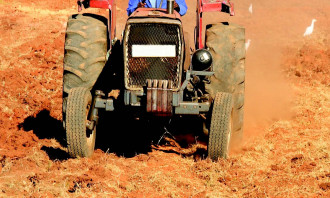
Biodiversity and renewable resources are essential to sustain the Earth
A comment on papers by Gregory et al . 2 and Guishen et al . 3
Two papers in this Issue concern world food resources from entirely different angles.
Previously in this Journal Cook and Frape 1 examined the potential regional food …
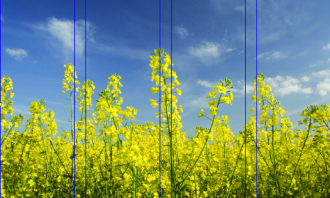
Systems, scientific strategy and sustainability
Much scientific effort is devoted to decompressing identified objects or phenomena into component pieces.
This has given rise to technologies that act on quite small parts of a whole to produce significant changes within it. GM technology, …

Professor Richards awarded prestigious Medal
Professor R. H. Richards, C.B.E, a long standing member of the Editorial Board of World Agriculture has been awarded the Royal College of Veterinary Surgeons' Queen's Medal.
A renowned fish vet. Professor R. H. Richards, CBE,MA, Vet.MB, Ph.D, …

Obituary – Professor Sir John Marsh CBE, 1931-2017
Sir John died on the 30th September, 2017. Professor Sir John Marsh was one of a very small band of the World’s outstanding agricultural economists over the past thirty years.
In 2011 he was awarded the Royal Agricultural Society of England’s …
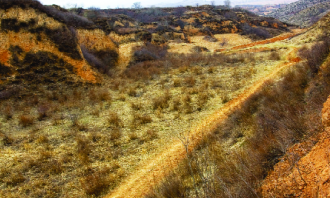
Editor's note
This group of publications (#1714 to #1722) includes the sad news of the death of our good friend and colleague, Professor Sir John Marsh. John has been a constant source of inspiration to our group and has worked hard for our Journal from the first …

Adapting Agriculture to Changing Climate in South Asia
Associate Scientist, CGIAR Research Program on Climate Change, Agriculture and Food Security (CCAFS), Borlaug Institute of South Asia (BISA), International Maize and Wheat Improvement Centre (CIMMYT), New Delhi, 110012, India.
2 Regional …
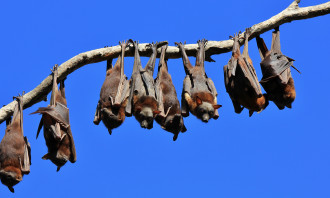
Disposal of N waste during water deprivation in birds and bats
Note to readers of this editorial : tropical insectivorous bats are important for insect control! Would any reader who has a knowledge of the mechanisms of bat’s excretion of nitrogen waste or of N metabolism by bats, please comment to the editor …

Adapting Agriculture to Changing Climate in South Asia
The paper by Khatri-Chhetri and Aggrawal explores a range of approaches to cope with the problems of adaptation to climate change in S E Asia.
Many of the adaptation strategies have relevance to agriculture in other areas. Understanding them …
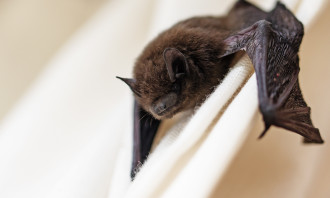
Editor’s comment on tropical bats and agriculture in a changing climate
This Issue considers the consequences of climate change in two quite different mammalian populations, caused by the growth of one of them in two most important world regions.
Nevertheless, there is a vital connection between the bat and human …

Plastic film in agriculture and horticulture: risks and benefits
The article by Professor Changrong Yan (1706) follows one we published in 2014 (1416) which addressed some of the challenges which this technology presents.
Use of plastic film is certainly not new; it was used to establish maize in early …
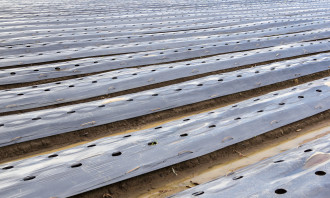
The benefits and challenge of plastic film mulching in China
Abstract :
Plastic film mulching has played an important role in Chinese agriculture owing to its effects on soil warming, moisture conservation and weed control.
It has increased grain and cash crop yields by 20%–35% and 20%–60%, …
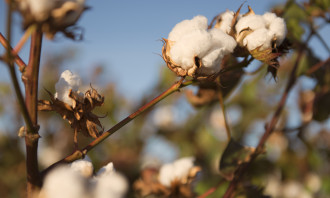
Editor’s note on cotton
In the early 1950s the place of cotton in common use for clothes was being gradually supplanted by synthetic fibres produced from oil.
In recent years cotton has regained its place owing very largely to technological developments in the …

Competing on the World Market by Integrating Technology and Crop Management: Cotton in Australia
Australian cotton crops now produce yields of around two and a half to three times world averageand Australian cotton yields are the highest in the world.
This is largely because of the rapid adoption of new technologies, but also because much …
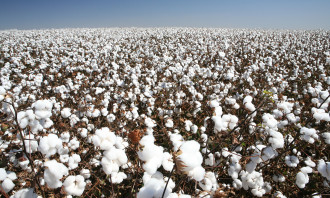
Sustainable cotton production in Australia and China
Cotton is produced in more than 100 countries in the world, but six of them – China, India, Pakistan, USA, Brazil and Uzbekistan – contribute about 80% of the total annual production of about 25 million tonnes of lint (1) .
While China is the …

The functions and sizes of the five carbon sinks on planet Earth and their relation to climate change Part 2 Coniferous forests-do they warm or cool the climate?
Summary
The UK Government and Forestry Commission state: “if we plant an additional 15,000 hectares per year, by 2050 these woodlands could be sequestering carbon equivalent to 10% of GHG emissions”(1)(Appendix A).
The inference is that by …
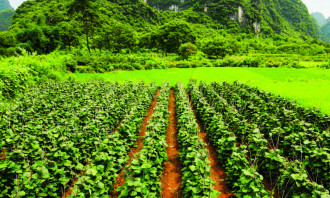
Afforestation, food production and poverty- a conflict of interests?
Negotiations about the control of climate change have centred on human activities that increase emissions and on strategies that can reduce the amount of greenhouse gases.
The imperatives of raising income and alleviating poverty imply …

Cereal and soya bean production and food security in China: Challenges and opportunities
Introduction
China’s GDP has increased steadily since 1949, reaching 63,646 billion Renminbi (1038 billion US dollars) in 2014 to become the world’s second largest economy (1) (Fig. 1).
In recent years, China’s food security has received …

Current and forthcoming Issues of World Agriculture
The New Year will see a new ‘face’ to World Agriculture .
We shall change our WEB format, and to keep our Journal abreast of developments in internet technology, we shall for example, simplify the procedure by which one downloads references …

The Market, the Managed, or the Mixed Economy. Which should it be in the North v South China Affair?
1. Market economies provide a means by which resources are distributed to secure maximum returns to their owners. Owners and users are assumed seek maximum profit.
Owners sell them at the highest price available and users, ultimately consumers…
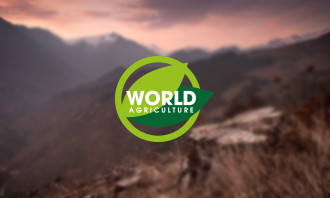
The functions and sizes of the five carbon sinks on planet Earth and their relation to climate change Part I Their present sizes and locations
Introduction
The carbon cycle is the biogeochemical cycle by which carbon is exchanged among five spheres of the Earth, carbon (C) sinks: the biosphere, pedosphere, lithosphere, hydrosphere, and atmosphere (These are not mutually exclusive, …

Some notes on the politics of survival
1. We can only make policies that have the consent of the power brokers
a. In a democracy such as the UK, power lies with those who win votes.
b. The Brexit debate has shown how voters disregard expert views but accept uncritically …
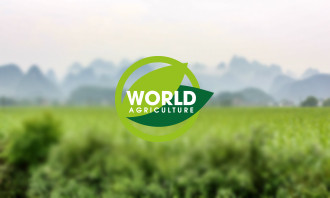
Innovative agroforestry for environmental security in India
Introduction
The role of trees in environmental security has been well known for ages.
Trees in agroforestry systems not only provide direct benefits (food, fodder, fuelwood, fertilizers, fibres, etc) but also improve soil fertility, …

A review of Dame Fiona Reynolds’ book: The Fight for Beauty, Publ. Oneworld Publications, London 2016; and on the effects of land use on climate change
Dame Fiona has published a most apposite and timely book on the Man’s need for beauty of the natural world.
She has asked me to review it – a hard-headed scientist to review a book on beauty, is you might think, a bit incongruous.
…

The part played by World Agriculture in three vital roles of countryside on the Earth
This Issue is one of the more important Issues of World Agriculture.
The pages here are more numerous than is normally the case. We deal with one of our fundamental purposes and objectives.
This is to give a clear, description of the …

“Capital” farmland is part of a solution to the Chinese food security problems
A discussion of the conclusions drawn by Dr. Tang Huaizhi, Dr. Xue Jian, Prof. Yun Wenju – this Issue
The Chinese Government fully recognizes the potential national problems associated with their current agricultural production and accepts the …

Government playing a bigger role in protecting farmland as supporting human society development
1. The area/quantity and productivity/quality of farmland being the foundation for humanity survival
Land is the foundation of human survival, agriculture is the basic industry of human society, and farmland closely related to agriculture is …

Current Chinese agricultural reform
See Status, problem and strategy of capital farmland development in China,
Dr.Tang Huaizhi et al . this issue
This evidence is of immense importance – there is a growing gap between what can be produced and what is demanded, there is too …

Status, problem and strategy of capital farmland development in China
Since the founding of the People’s Republic of China, the construction of irrigation and water conservation projects reached a peak in the 1960s and 1970s with farmland irrigation area of about 45 Mha (1) nationwide. This provides the base from …

India: Potential based on tradition
Anyone who has visited India two or three times in the last decade cannot fail to be impressed by the huge economic progress made in recent years.
Dual carriageways and regular flights now link most major cities and traffic becomes more …
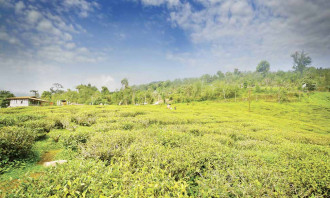
Innovative agroforestry for livelihood security in India
Agroforestry is practised by millions of farmers worldwide, and has been a feature of agriculture for millennia.
It encompasses a wide range of trees that are grown on farms and in rural landscapes, and includes the generation of science-base…

Indian agroforestry and food production
In the current Issue of WA we publish a fascinating and informative account of agroforestry in India by Handa, Toky et al .
In this paper are listed various tree-based products: gums, resins, floss, fibres, fodder, brooms, fruits and many …

Has agricultural biotechnology finally turned a corner?
Policy proposals
Governments, NGOs and other civil society representatives should engage in a comprehensive public debate on how advances in agbiotech, can benefit smallholders in developing countries by producing more sustainable food …

India: Potential based on tradition
Anyone who has visited India two or three times in the last decade cannot fail to be impressed by the huge economic progress made in recent years.
Dual carriageways and regular flights now link most major cities and traffic becomes more …

Biotech for food, acceptance and rejection Has the day of Agribiotec arrived?
Murphy’s paper, which reports on The FAO Symposium on agbiotech, February 2016, provides evidence of changes in the use of agricultural biotechnology, reports on a number of case studies in the use of GM in developing countries and discusses the …

Are the European Union Regulators Laggards?
Are the European Union Regulators Laggards?
It is appropriate, first, to review the discussions and outcome of a meeting of the FAO in Rome, 15-17 February this year.
The meeting was entitled “The Role of Agricultural Biotechnologies in …
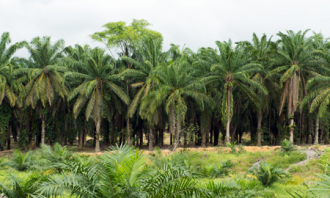
What is the future for oil palm as a global crop?
Summary
The African oil palm, Elaeis guineensis, is the major global vegetable oil crop.
Palm oil is consumed daily by over two billion people and can be found in about half of all products on sale in a typical supermarket.
Increased …

The supply of fish oil to aquaculture: a role for transgenic oilseed crops?
Summary
The importance of an alternative and sustainable supply of omega-3 long chain polyunsaturated fatty acids (LC omega-3) has long been established.
As these biologically active fatty acids have a role in nutrition and health, there is …

Oils and fatty acids essential for vertebrate health – e.g. fish and Man
Summary
This paper provides explanations both of why essential fatty acids are essential and of biochemical terms which are widely used by the general press.
These explanations should aid an appreciation of two of our papers in this issue …

Good Fats, Obesity, CVD and GM
Vegetable oils provide more than twice as much net energy per unit weight, compared with proteins or carbohydrates.
Fatty foods therefore contribute to obesity in the Western world. Obesity is a contributory factor to the wide occurrence of …

Weak international institutions prevent the full benefits of science based innovation being secured for consumers or the environment
Solutions and confrontations
Two of the papers in this edition shed light on assertions commonly made by pressure groups.
Murphy, contrary to their claims, shows that expanding plantation palm oil production gives a smaller environmental …
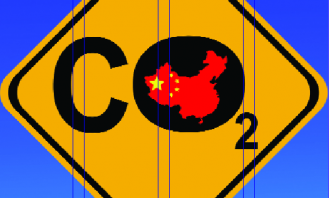
Impact of climate change on crop production and agricultural engineering technological countermeasures used in mitigation in China
Summary1
A statistical analysis of the independent effects of a number of environmental factors on agricultural crop production in China indicated that climate change, measured as trends of temperature rise, sunshine decline and precipitation …

China cultivated land change and its carbon budget measurement based on the system dynamics
Summary
As a result of industrialization, an increasing proportion of China’s cultivated land is being urbanized, causing considerable environmental damage.
In an endeavour to promote a low-carbon economy, this article focuses on modeling the …
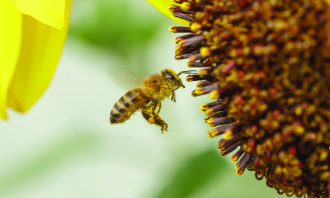
Bee decline, pollination and food production
Summary
There are widespread concerns that falling honey bee numbers will lead to food shortages.
This view is not universally accepted and further information is needed to determine future directions to reduce the potential impact of bee …

Climate change and the Curate’s Egg; The carbon budget, cycle and sinks.
Keywords: Climate change, carbon sinks, GHG, food production.
See Appendix for definitions of terms used.
Matt Ridley, writing in the Wall Street Journal (1), made a number of points justifying why the world should continue to burn fossil …

New Technology and Climate Change In China: A Global Problem
This edition contains articles on the expected effects of climate change on agricultural production in China and on the role of plant breeding in adapting to the evolving situation.
Preparing to live in a world where there is a substantial …
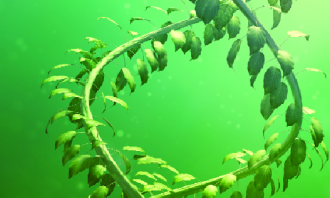
Using climate information to support crop breeding decisions and adaptation in agriculture
Summary
Population growth in the next few decades will increase the need for food production, while the yields of major food crops could be impacted by the changing climate and changing threats from pests and pathogens.
Crop breeding, both …

The challenge of breeding for increased grain production in an era of global climate change and genomics
Summary
Grain from self-pollinating crops contributes more than 60% of annual global calories for human consumption, and demand is increasing.
Grain production in self-pollinating crops is extremely sensitive to the effects of heat and …

Smart Metrics and Data Management Strategies for Public Private Partnerships
Glossary
Impact investing: The practice of investing in companies, NGOs, programs, projects, and funds with the explicit intention of generating both financial returns on the investment as well as social and environmental impacts.
Private …

Problems of ‘Scaling up’ new crop cultivars: thoughts of an agricultural economist on wider issues in this interconnected world
This paper deals with a critical issue in the uptake of technology in the developing world.
New technologies are essential to ensure the increased production and reduced environmental impact agriculture needs to achieve. Initiation of a new …
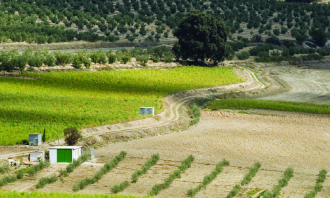
Scaling Up Technology Adoption Among Poor Farmers: the Case of Seed
Summary
Agricultural development programmes have a long history of working toward the adoption of improved crop cultivars among poor farmers.
The potential food security impacts of adopting improved cultivars are well documented and critical …
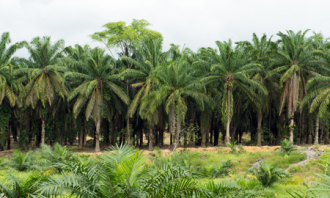
Mitigation of water logging and salinity through biodrainage: potential and practice
Summary
Over the past hundred years, vast areas worldwide have been used for intensive agriculture following clearance by removal of deep rooted tree vegetation or by introducing irrigation in arid zones.
After decades of profitable returns, …
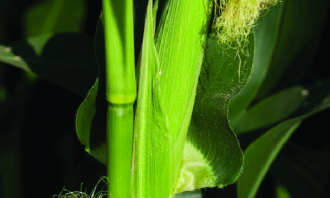
In defence of GM crops
Elsewhere in this journal (pages 60-67), we make a critique of the article by Dr Helen Wallace (Wallace, 2013), in which she argues strongly that GM crops are both unnecessary and harmful in various ways.
Dr Wallace has herself responded to …

Response to Professor Anthony Trewavas & Martin Livermore
Trevewas and Livermore clearly take the view that the loss of autonomy for poorer farmers associated with purchasing patented GM seeds is justified by a number of claimed benefits.
However, in practice, GM farming is in crisis as resistant …

GM is a valuable technology that solves many agricultural problems in breeding and generation of new traits
Summary
In the last issue of World Agriculture, Vol. 4, No. 1, Dr Helen Wallace of GeneWatch UK wrote a highly critical analysis of the role of GM crops in world agriculture (1) .
By selectively quoting only critical sources, Dr Wallace …

Pros and cons of GM crops as a source of resistance to insect pests
Summary
Current experience of the pros and cons of using GM crops for resistance to insect pests is largely limited to one source of transgene, the proteins expressing the toxin of Bacillus thuringiensis.
Since the gene transferred, and not …
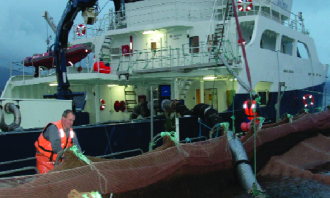
Aquaculture: are the criticisms justified? II – Aquaculture’s environmental impact and use of resources, with special reference to farming Atlantic salmon
Summary
Salmon farming is the most highly developed form of large scale intensive aquaculture owing to its productivity growth and technological change.
The fundamental questions are how farmed salmon compares to other food production systems …
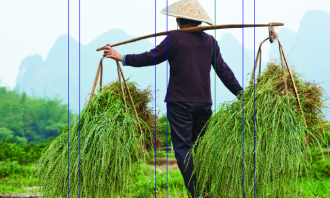
Plastic-film mulch in Chinese agriculture: Importance and problems
Summary
Plastic-film mulch is widely used to increase the productivity of crops, vegetables and fruit trees in cold and arid or semiarid regions of China.
Use increased from 6000 t, covering 0.12 million ha, in 1982, to 1.2 million t, …

Interactions between orogeny, climate and land use in the Semiarid Loess Plateau, China
Glossary
Land cover change: the replacement of one land cover type by another, e.g., due to expansion of croplands, deforestation, or a change in urban extent.
Land management change: a change in how humans treat vegetation, soil, and water for …
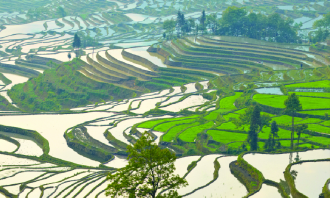
Agroecosystem management in arid areas under climate change: Experiences from the Semiarid Loess Plateau, China
Summary
The Loess Plateau is the cradle of ancient Chinese civilization and a place where dryland agriculture originated; it is also one of the world’s most vulnerable ecological systems with the most serious soil erosion problems. The plateau has …
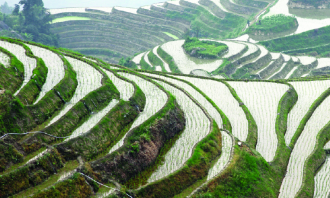
Contribution of improved nitrogen fertilizer use to development of a low carbon economy in China
Summary
The use of nitrogen (N) and other fertilisers has been one of the keys to achieving food security in China. Grain production almost doubled in China between 1980 and 2010, yet total fertiliser use increased more than four-fold in the same …

Policy And New Technology – Common Policy Problems
This edition of WA includes a paper by Powlson and colleagues that looks in depth at the use of Nitrogenous fertiliser in China.
Its conclusions are of immediate relevance to improving both the efficiency of Chinese agriculture and its impact …
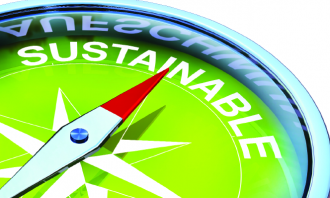
What do we mean by Sustainable?
Should we not in editorials pose areas in which solutions might lie and indicate the problems associated with their implementation?
In the last issue we published some estimates of how the world might be able to avoid mass starvation without …

Conflicting Perspectives On GM – Science And Persuasion
On January 17th 2014 a demonstration took place outside the Greenpeace offices in Hamburg.
It was led by a group of scientists who were protesting against Greenpeace’s opposition to Golden Rice. This is genetically modified rice that provides a …
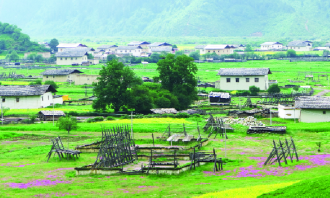
In This Issue – achieving a Low Carbon Economy
In this Issue we have international cooperation amongst nations of the kind this Journal was designed to kindle.
Experts from China, UK, Australia and India have integrated and focused their attention on several current problems of international …
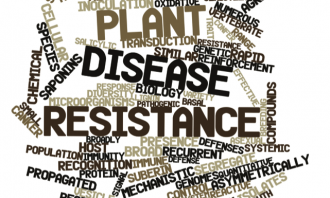
What role for GM crops in world agriculture?
Summary
A critical analysis of claims that genetically modified (GM) crops will play a central role in world agriculture is provided, in the context of current attempts to expand the market for GM seeds in developing countries.
It is …
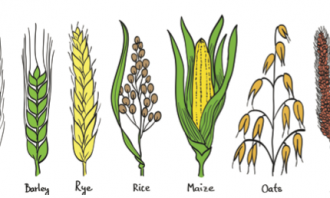
World Food Production – will it be adequate in 2050?
Summary
A system was devised to help understand some of the problems likely to be encountered in feeding the world in 2050.
The system assumed that by 2050 the world population would be approximately 9.4 billion, as predicted by FAO, that …
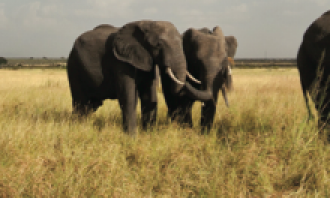
Which way farm animal welfare in Tanzania?
Summary
Tanzania is one of the world’s poorest and least developed countries but has huge numbers of cattle, goats, sheep and poultry, fewer pigs and very few water buffalo and camels.
Most animals are kept under low input-low output …

Climate change, population and food security
Summary
It is widely recognised that climate change will impact negatively on food security and poverty, particularly in some countries in the developing world.
This paper, however, points out that population growth will likely have a …
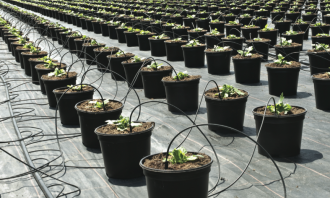
GM Technology – Risky Method or Valuable Tool?
Summary
Genetic modification is one of many current tools that can be used in the development of new, improved crops.
It is widely recognised that in order to meet future requirements for food, without having serious impacts on the …
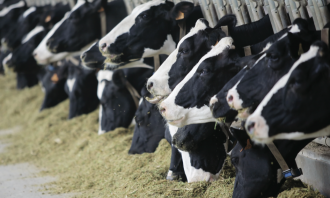
A review of changes in the use of raw materials in the manufacture of animal feeds in Great Britain from 1976 to 2011
Summary
The use of raw materials for the manufacture of compounded and blended animal feeds reflects their supply and relative cost to meet nutritional specifications.
Trends in the use of raw materials in the production of animal feeds in …
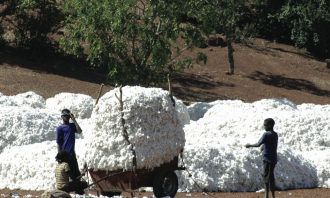
Thoughts on GM crops
In our last issue we published two articles which provided evidence of agronomic and environmental benefits from the use of GM crops.
These demonstrated significant cost savings to growers and that those financial benefits were greatest for …
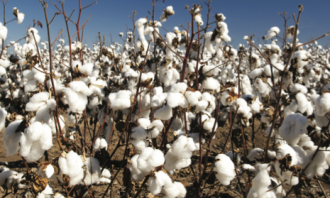
New Technologies, New Problems but Essential
Few new technologies have generated the level of anxiety that has greeted genetic modification.
So great has been the concern that, in Europe, legislation limiting the use of the seeds produced by genetic modification has become so stringent as …

Letters
8th November 2013
Dear Editor
Thank you for the copy of World Agriculture which I have been reading with interest – including the editorial, which resonated with my own thoughts.
One or two comments on the articles, which in places rather underlines your …

Book and report reviews - Good Food for Everyone Forever
Colin Tudge, Pari Publishing. paperback, 176pp, ISBN: 978-88- 95604-13-8
The main message of this book, declares Colin Tudge with a focus on the world’s growing population, is that we, ... can feed ourselves to the highest standards both of …

Book and report reviews - The Hay on Wye Literary Festival, 2011
The Hay on Wye Literary Festival, 2011
The festival is an annual event held in late spring. This year the main sponsor was the Daily Telegraph, a leading UK newspaper. The festival format allows presentation and discussion of a wide range of …
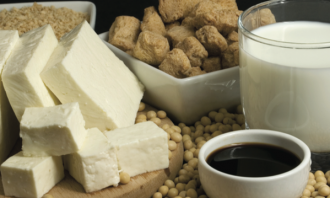
Impact of Cultured Meat on Global Agriculture
Summary
Ideas on cultured meat have appeared in print for over a century, yet research has commenced only in recent years and surprisingly little progress has been made. This is an area in which the European Community has played a more …
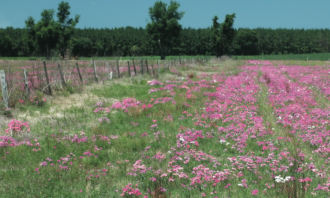
Idle land for future crop production
Abstract
Cultivated land can only be left ‘idle’ temporarily; after a time the carbon sequestered by land left idle renders it unviable for re-cultivation without excessive carbon dioxide emissions. Depending on the increase in carbon footprint…
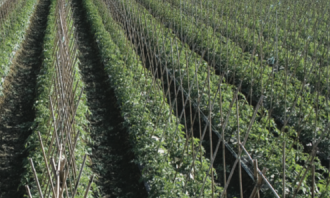
Sustainable intensification
Summary
There is the prospect of a global population of 9 billion by mid 21st Century. Rising real levels of income, growing constraints on food production from climate change and alternative land use together with an accelerating rate of …
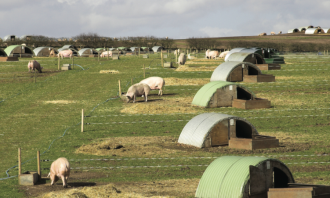
Intensive (farming) Agriculture
Since people often hold quite strong views for or against what they call “intensive” farming, it is important to clarify the meanings that can be attached to the term. Agriculture uses a vast range of resources and each one can be used intensively …
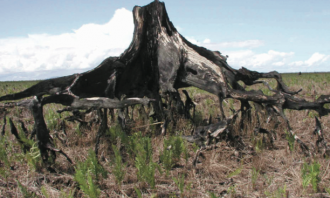
Carbon, Conservation and Agricultural Development – the Coastal Peatlands of Sumatra, Indonesia
Summary
This paper examines the issue of continued and increased pressure on carbon conservation in the peat- lands of Indonesia – with a specific focus on the coastal peatlands of Riau Province, Sumatra and the current development on those …

Peak phosphorus: implications for agriculture
Summary
Phosphorus (P) is as essential to agriculture as it is to life. Contrary to predictions of ‘peak P’ and a looming crisis in P supply, recent studies show that rock phosphate (RP) reserves will last for centuries. Mine production …
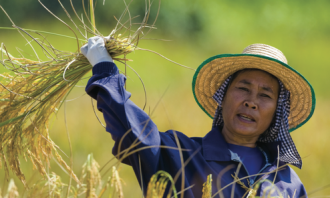
Developments in Rice Research: Visions and Pragmatism
Summary
Rice research concerns the development of new products, concepts and technologies to improve the yield and quali- ty of rice in ways that do not damage the environment. Over the next 40 years, the predicted 2.2 billion (32%) increase …

NPK efficiency and “plowing”
The world population is approximately 6.5 billion (6.5 x 10 9) and it is expected to rise to 9.5 x 10 9 within the next few decades. This rise will greatly increase the likelihood of mass starvation on a scale not previously witnessed, unless there …
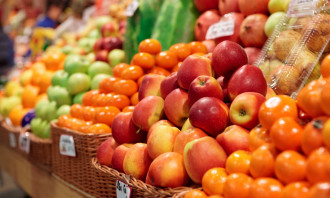
Sustaining World Food Supply using novel technologies
The UN projects that by 2050 World food production will need to increase by a minimum of 70% to feed a projected World population of more than 9 billion.
It is clear that extraordinary improvements in agricultural productivity will be necessary. …

The global, environmental and economic impact of biotech crops 1996-2010
Summary
This is a review of published (mostly) peer-reviewed scientific and economic evidence relating to some of the important economic and environmental impacts of biotech crops, following their commercial introduction in 1996. It examines …
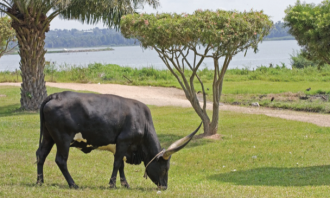
Uganda Agrochemical dealers’ practises and interactions with farmers
Summary
The agricultural industry is an essential component of the Uganda economy and often struggles to obtain good advice through its existing national agricultural extension and research system. Agricultural dealers (agrodealers) are often …
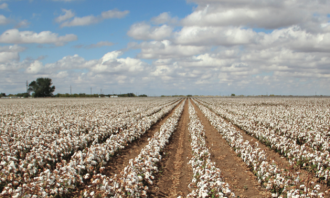
GM crops, developing countries and food security
Summary
The agronomic and economic performance of genetically modified (GM) crops relative to their conventional counterparts has been largely investigated worldwide. As a result there is considerable information to conduct a meta-analysis to …

Land Degradation and the Rural Poor
Summary
By 2025, the rural population of the developing world will have increased to almost 3.2 billion, placing increasing pressure on natural resources, especially arable land. Around 1.3 billion people in developing economies live in mar- …
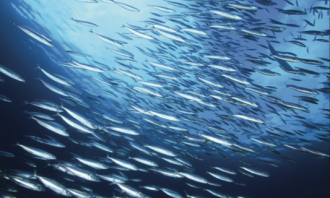
Aquaculture: are the criticisms justified? Feeding fish to fish
Summary
Aquaculture is a fast-growing sector of livestock production, but has attracted criticism owing to the practice of using marine ingredients as feed, usually in the form of fishmeal and fish oil. After placing so-called production of …
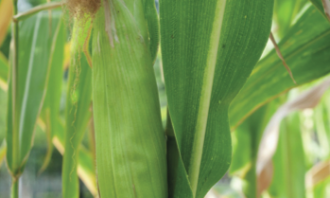
Why is it still impossible to hold a worthwhile debate over the criticisms of biotechnology in agriculture?
There are many assertions made, and scientific conclusions drawn, about how agriculture, including fish farming, horticulture and forestry, should develop over the next half century. The purpose of this development must be to provide adequate food …

Targeting good agricultural advice to where it is really needed
One of the most serious problems facing agriculture today is to ensure that adequate nutrition is provided to people around the world. In many developing countries, this difficulty is compounded by factors such as rising populations, environmental …
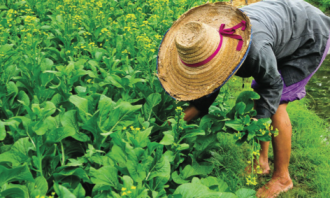
Economics of GM crops in developing and developed economies
This journal exists because the world community faces a growing challenge to increase food supply at a rate that matches the demands of a growing and richer population.
Three articles in this edition of World Agriculture address important …

Whither technology
The debate about the potential benefits and public acceptance of biotechnology in agriculture continues unabated.
The debate seems to have clear polarisations, irrespective of evidence, no matter how robust. There are about 1500 Mha of land …

A response to a letter on “cocktail effects”
2nd April 2013
Dear editor,
In a letter in the autumn 2011 edition of World Agriculture, Christopher Jones commented that in my recent article on pesticide toxicity (Pesticide toxicity and public chemophobia: how toxic are modern-day pesticides? World …

Hook to Plate: the state of Marine Fisheries; a Commonwealth Perspective ISBN 978-0- 903850-37-7
15th March 2013
The recently published Census of the Oceans has highlighted the impact man is having on all aspects of the marine environment and the plant and animal populations which live there.
This book contains descriptions and discussion of fisheries as …

Dairying: a British project to develop a more sustainable future
Summary
The dairy industry provides food products that promote health and well-being.
This industry helps to sustain rural communities and plays a vital role in land stewardship.
One of its key challenges is to expand production to …

Sustainable farming – stepping up to the challenge
Summary
As a consequence of extensive debate the challenges of achieving global food security are well understood.
It is now vital that policy makers identify the specific solutions needed to ensure farmers and growers in all parts of the …

Another reform? Proposals for the post-2013 Common Agricultural Policy
Summary
Following two decades of policy change, in 2011 the European Commission tabled proposals for a new ‘reform’ of the CAP.
A major component of the reform would be a revamping of the existing system of direct payments to farmers.
…
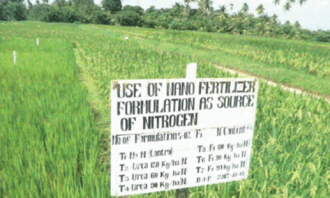
The Advent of Nanotechnology in Smart Fertiliser
Summary
As the planet marches toward a 9 billion population by 2050, of the manifold sustainability issues that humanity will face, fertiliser usage in agriculture will be of critical importance.
We must discover methods to produce more …
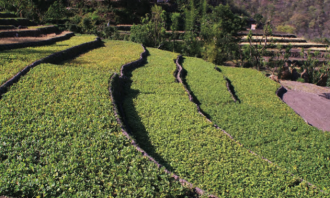
Climate change and food security of India: adaptation strategies for the irrigation sector
Summary
Creation of a large irrigation potential has been the cornerstone of India’s agricultural growth and past food security.
It is estimated that the irrigation sector in the country will be affected considerably by climate change due …

Australia’s Water Reform, with especial reference to the Murray Darling Basin
Summary
Australia initiated a water reform process in 1994 with the agreement between the Commonwealth and States/Territories governments followed by the Intergovernmental Agreement on the National Water Initiative, in 2004.
The rights for …

The economics of agriculture as viewed from the perspectives of the NFU, the UK, the EU and the world
Every person is affected by how we use our natural resources.
There are competing claims but none is more significant than the need to provide an adequate, reliable food supply.
This edition includes a substantial article from the …
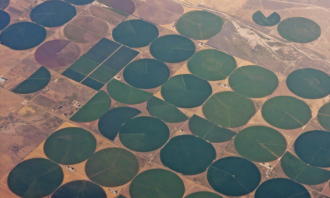
The complexities of global fertilizer use
Most people, including many scientists, seem to believe that worldwide consumption of fertilizers is continually increasing in an unsustainable and environmentally damaging way.
This view is particularly prevalent at the present time with …

Developments in East Africa
Recently there have been two important developments in East Africa and both have involved Dr Christie Peacock, one of our Board members.
First, Farm Africa has set up Sidai Africa Ltd, with Christie as Chairman, funded by the Bill and Melinda …

Is there a problem?
When the leaders of the six core nations of the European Economic Community (EEC) established the Common Agricultural Policy (CAP) they did so against a background of the periodic starvation of their peoples and the wish to avoid future military …
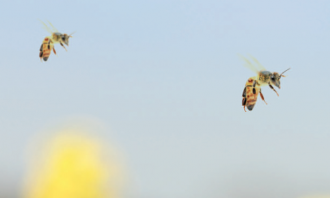
Truth about Organic Foods
Truth About Organic Foods’ (2006) by Alex Avery. Henderson Communications LLC, Chesterfield. (ISBN-13: 978-0-9788952-0-4). Available from Jonathon Harrington, Optima Excel, Pen-y-Lan, Tregoed, Brecon, Powys, LD3 0SS, UK.
It is not our normal …
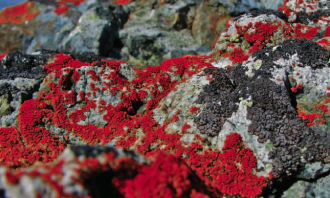
The Foresight Report, The Future of Food and Farming: Challenges and choices for global sustainability
The Future of Food and Farming: Challenges and choices for future sustainablity, (Foresight Report, London, UK Government, Office for Science. WEB: January, 2011)
This is a very good report. It does address the issue of food security in a …
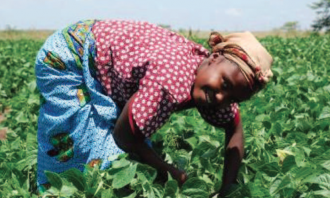
Integrated farm management; reducing impact of agriculture and maintaining output – the example of LEAF in the UK
Summary
To address the challenges and choices for global sustainability, farming systems need to be supportive of traditional methods and encourage the development and adoption of new technologies.
There will need to be a range of farming …
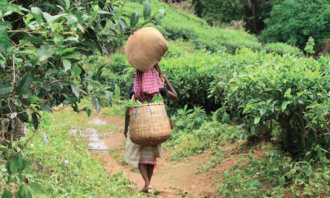
Organic agriculture: The farming system fit for the 21st century
Summary
The approaching ‘perfect storm’ of climate change, resource depletion, food insecurity and population growth, in addition to continuing environmental degradation and biodiversity loss, is forcing us all to think again about how we …

Feeding the world: a contribution to the debate
Summary
It is often claimed by proponents of organic farming that, if used worldwide, it would provide sufficient food for a growing world population.
Here we make a critical assessment of this claim for wheat, a major cereal crop and …
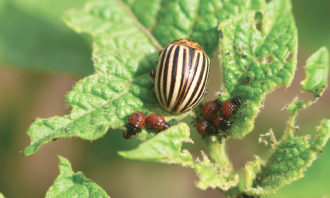
Pesticide toxicity and public chemophobia: how toxic are modern-day pesticides?
Summary
Global food security is a major issue for the future of humanity. Food demand is predicted to grow strongly for at least the next 40 years and food supply is already struggling to keep up.
Protecting crops from weeds, fungal …

The scale for managing production vs the scale required for ecosystem service production
Summary
The world is facing unprecedented long term pressures on agricultural landscapes.
It will be necessary to increase food production to meet demand but this must be undertaken sustainably, with a minimum of environmental and social …
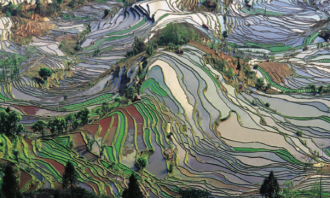
Nitrogen cycle and world food production
Summary
In the biosphere nitrogen has the most complex cycle of all circulating elements.
Its incessant reuse makes life on Earth possible. Traditional agricultures supplied limited amounts of the nutrient by recycling organic wastes and …
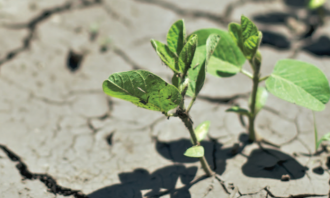
Food for thought on farming systems
The nitrogen-cycle (N-cycle), discussed in detail in this Issue, is a key to the difference between “organic” and so-called “conventional” farming.
Synthetic N- fertilisers depend for their production upon the Haber process for the fixation of …
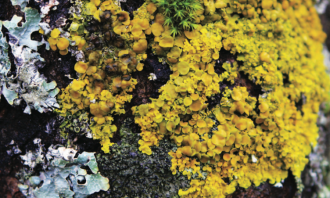
The ‘Organics’ Debate
We make no apology for publishing more articles and an editorial on the general subject of ‘organic’ farming in this issue of World Agriculture . The subject gives rise to extensive and often polarised discussion, especially in Europe and the …

Organic farming myths and reality
Summary
Organic farming represents a promising, if still imperfect, approach to improving the sustainability, quality and health impacts of agriculture. Production standards have become highly codified and regulated to protect consumers and …

The Myths of Organic Farming
Summary
Organic farming has no scientific basis. It depends upon a false distinction between synthetic chemicals (‘bad’) and ‘natural’ chemicals (‘good’) and its rules are inconsistent and irrational. Claims that it is safer, more nutritious …

World Food Supply and Biodiversity
Summary
The current world population of around seven billion is projected to reach nine billion in forty years or less. The UN projects agricultural output will need to increase by 70% just to maintain current dietary standards – which includes …
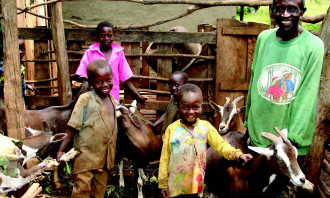
Making Livestock Services Accessible to farmers in Africa
Summary
Improving the production and marketing of livestock kept by smallholder farmers in Africa has the potential to be a route out of poverty for millions of families. However farmers’ ability to improve live- stock production is constrained …

New Horizons for Small-scale Farming in East Africa
Summary
Small-scale farming in East Africa is in transition from a subsistence to a market-based agriculture, as households recognize that many of their needs cannot be satisfied directly from the land. This is the latest phase in a passage …

Planting Paradise – Is there an option?
Summary
A not insignificant development challenge in Southeast Asia is linked to the incredible diversity of life, both on land and in the sea. Continued and heightened international awareness of the rich fauna and flora and the rapid loss of …

Environmental and economic effects of management of weeds in genetically modified, herbicide tolerant (GMHT) sugar beet
Summary
Post-emergence weed control in sugar beet relies on a sequence of three to four treatments of herbicide mixtures applied when weeds, and crop, are small. The use of glyphosate in genetically modified herbicide tolerant beet would …
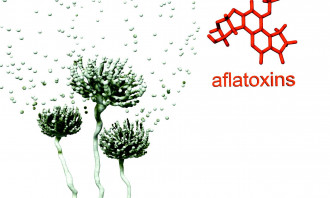
GM Maize and mycotoxins
In the first Issue we commenced an analysis of problems related to the structure of African agriculture, that discussion is continued here. We present evidence of the replacement of a tropical forest by oil palm plantations, as an economic necessity…

Organic Farming
In 1987 the Ministry of Agriculture, Fisheries and Food (MAFF) established the United Kingdom Register of Organic Food Standards to set the organic production standards for this country: I chaired it for the next 12 years. It brought together the …
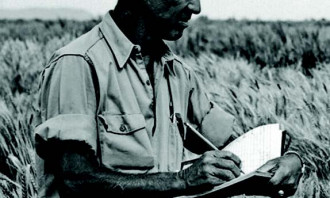
Norman Borlaug 1914-2009
This Issue of World Agriculture is dedicated to the memory of Norman Borlaug, who was born on a farm near Cresco, Iowa in 1914 and who won a Nobel Peace Prize in 1970. He died in September 2009 during the preparation for this journal of a paper of …
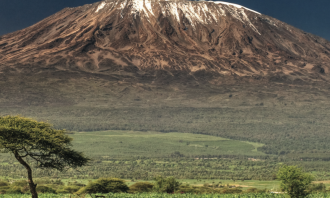
The Royal Society: Sustainable Agriculture
Two consecutive publications of The Royal Society appeared in February 2008. These are entitled Sustainable agriculture I and Sustainable agriculture II (Philosophical Transactions of The Royal Society. 363, No.1491, 443-680 & 363, No.1492, …
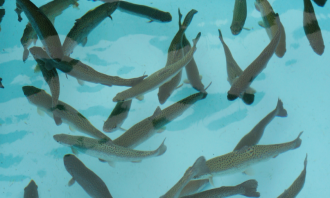
Fish from Africa for Africa ...
Summary
Fish is a key dietary ingredient in many coastal and landlocked African countries providing much-needed high-quality protein. The WorldFish Center cites a decline in the per capita supply of such protein in sub- Saharan Africa (SSA) …

Soil Phosphorus – from feast to famine
Summary
In the West and in rapidly developing countries, for instance China, the overuse of phosphorus (P) in fertilisers and manures can cause serious eutrophication. In Sub-Saharan Africa the opposite problem – an acute shortage of P- is a …
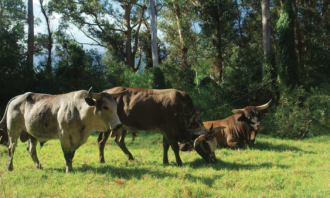
Developing contract farming systems in Uganda
Introduction
Collective action remains the only effective means deployed by smallholder farmers in Uganda to have access to markets and reduce transaction costs. These have varied from cooperative societies to various forms of farmer groups in …

Is agricultural development still relevant for sub-Saharan Africa?
Introduction
The situation in Africa is dire.
Even before the recent world food crisis, a stag- gering one in three people and a third of all children were undernourished and more than one half of all Africans (about 300 mil- lion people) …
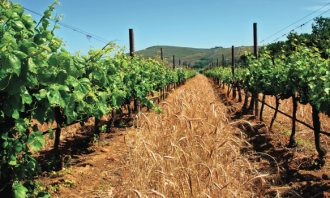
Africa and Agriculture
Agriculture, including animal production, has always been important to Africa and is likely to continue to be so.
It has provided food for people and other products such as feed for livestock and raw materials for building and clothing, e.g. …

Around the world in 80 countries
The world faces global agricultural problems with a rising human population, increased consumption per capita and climate change. The growth in agricultural yields during the 20th century was associated with intensive experimentation, that should …

